How to Decorate a Room – Where to Start
Introducing a brand new series, Simply Decorating, a free diy decorating resource designed especially for every diy decorator who is eager to transform their home into a place that reflects their personal style and needs.

Wondering how you can learn to decorate your home? This series is tailored just for you, guiding you step by step through the process of creating a home you’ll love.
I know that one of the main reasons you visit me here at Worthing Court is because you want to create a home that is uniquely you. You want a welcoming space that is a joy to come home to and a joy to welcome guests to.
You’re seeking practical, easy-to-follow advice that demystifies the decorating process, even if you’ve never rearranged a room.
I want to save you from some of the costly and dumb mistakes that I’ve made.
Like that time that I bought a navy blue plaid sofa because it was on sale and I tried to force it into a room with gold and green shag carpeting because navy blue goes with gold and green – right??? Let’s just say it was baaaad.
The Simply Decorating series will be just that. It will guide you through decorating your home, from start to finish, with simple, practical, and easy to understand decorating tips.
So, consider me your pocket interior decorator that you can refer to time after time for answers to all your decorating questions and challenges.
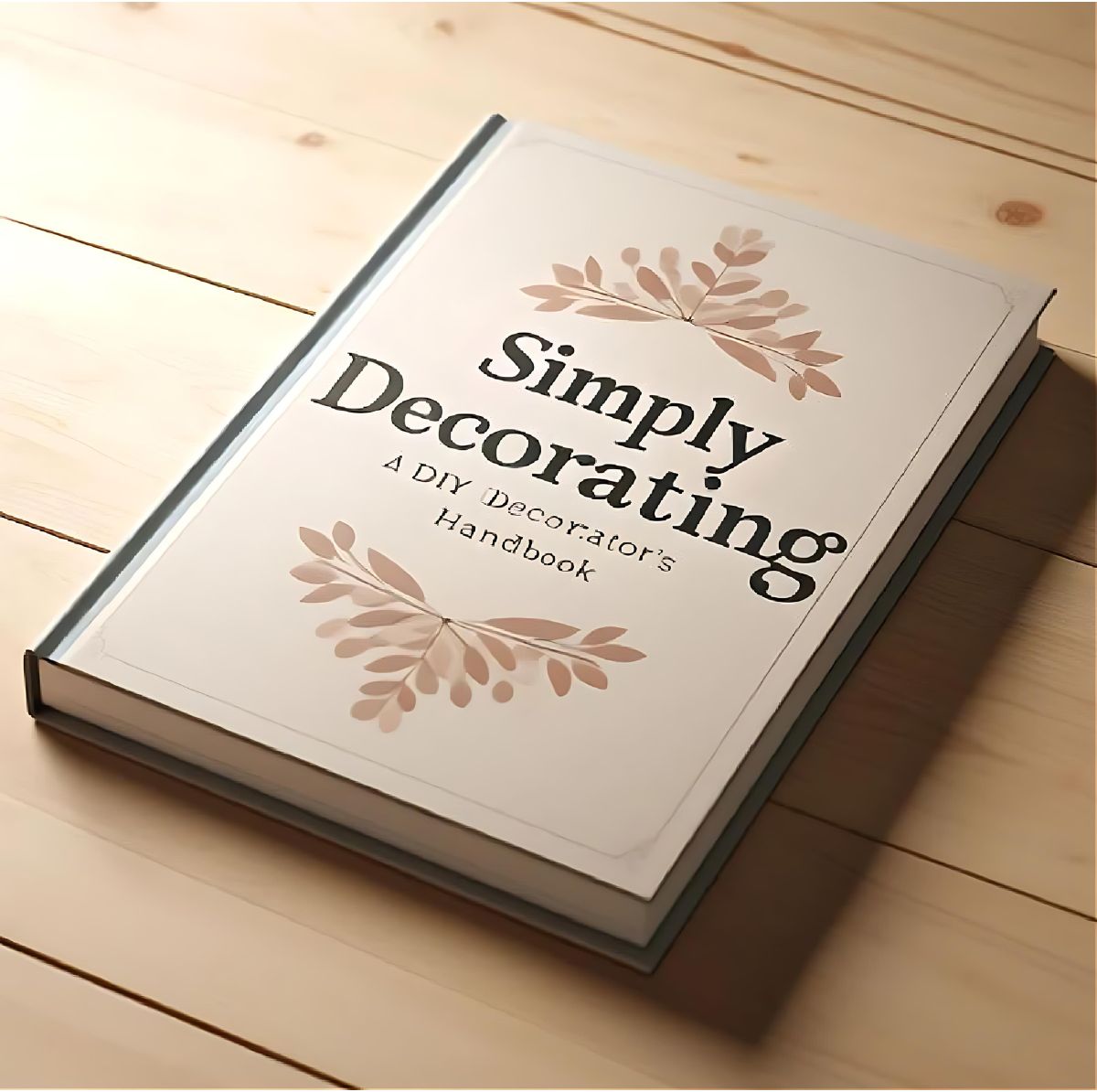
It will provide you with the knowledge to make informed, creative decisions for transforming your space, without spending a dime for a decorating course.
Whether you’re freshening up a single room or overhauling your entire home, following this series will help you to achieve the beautiful results you dream of!
We’ll be starting with the basics because mastering these is like learning the scales before playing a song—it sets you up for success in every project.
By understanding fundamental decorating rules and setting clear goals, you’ll be able to personalize and beautify your space with confidence.
From the basics, we’ll move on to applying these principles across different rooms and different areas within a room, transforming any area into a personalized place you adore.
My post on how to style shelves is just one example of the many nitty-gritty details we’ll get into.

Look for new tips once or twice each week, with occasional breaks for special posts for holidays or seasonal themes.
If you want to jump ahead though, I already have many, many posts written about the decorating process. But to for the best foundation and to get the most out of the series, I encourage you to follow along in order.
Simply Decorating is something that has been on my heart for a long, long time, so I’m super excited to finally get started!
We have a lot of ground to cover and I have lots and lots to share with you! It’s going to be a fun ride, so be sure to sign up to receive my emails so that you don’t miss a thing.
So, let’s take this journey together, and turn your decorating dreams into reality, one post at a time.
Today, we begin at the very start, the steps to decorating a room. We’ll focus on what to do before picking up a paintbrush or buying a piece of furniture.
How to decorate a room – the beginning
There is a systematic process for how to go about decorating a room and having a clear understanding of it will make all the difference in the world.
For a successful outcome, you must have a good grasp of the space you’re working with a vision of what you aim to achieve.
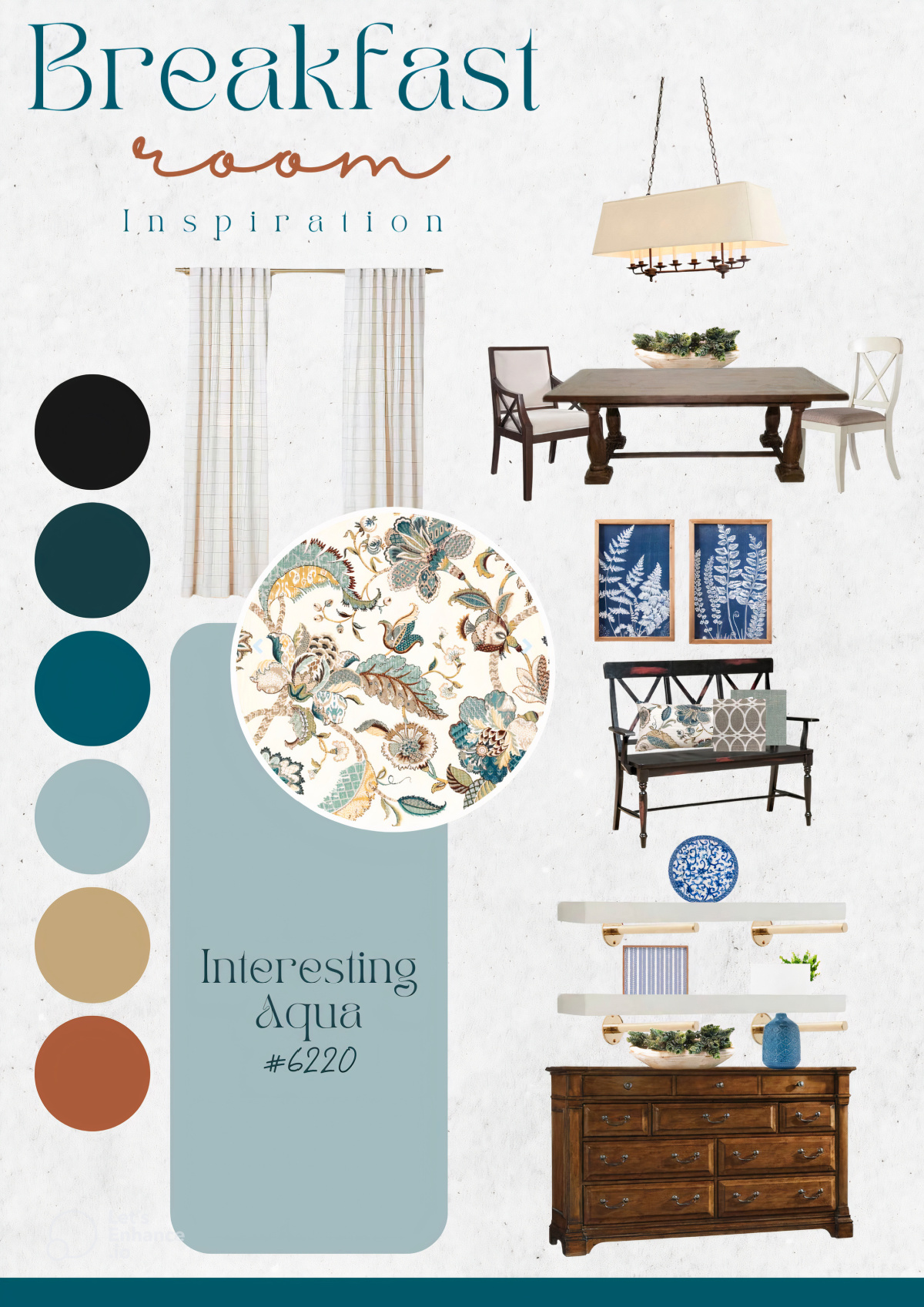
It’s crucial to assess the space accurately, understand your needs and desires, and gather inspiration.
These initial steps will be your guide to every decision you make, from selecting colors and fabrics to choosing the right furniture for your space, to selecting the final finishing touches.
• Assess the Current Space: Take a thorough look at the room as it currently is, noting what you like and what doesn’t work.
• Set Goals and Identify Needs: In a sense, this step isn’t much different than creating a design board that will help you visualize the outcome and will also help to keep you on task.
This is an example of an Excel spreadsheet that I create for myself at the beginning of a room decorating project.
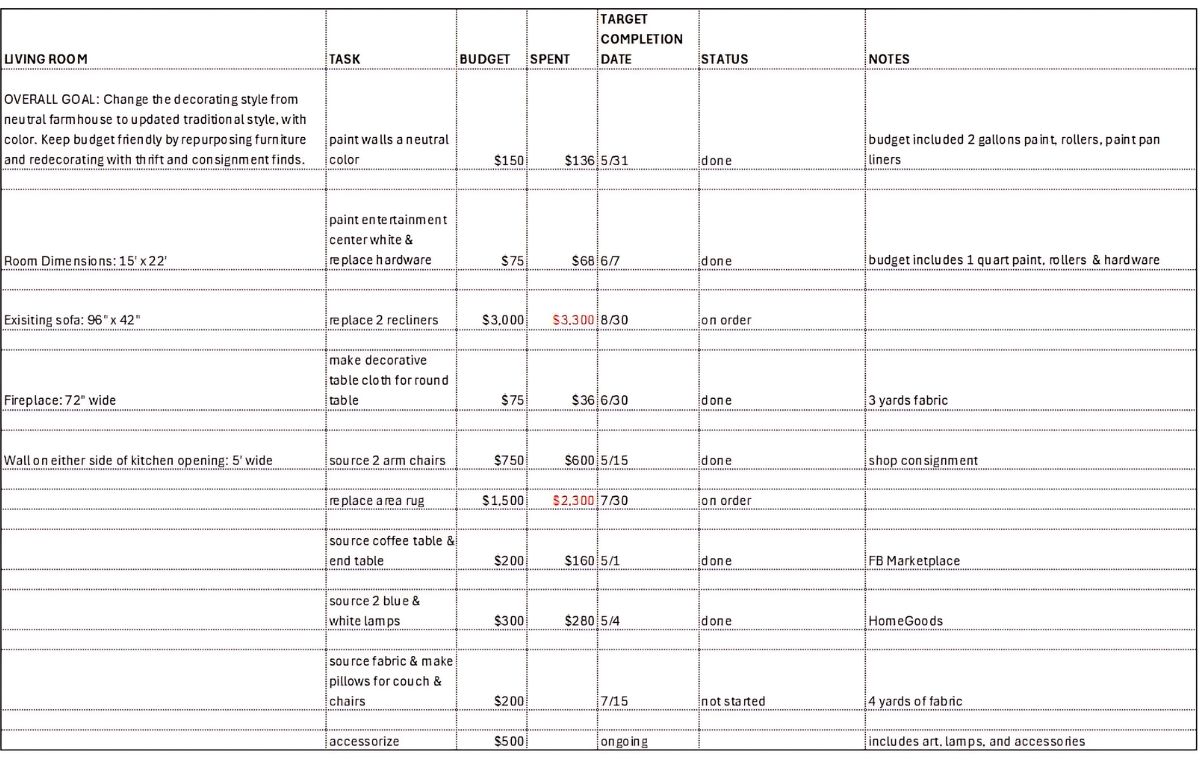
Do you need more seating or storage? Does your room need to do double duty?
For example: you may need your dining room to also function as an office, so you may choose a sideboard that can also act as a credenza.
• Identify the Mood: Since our environment has a big impact on how we feel, use 2 or 3 words to define the mood you want your room to have.
For example: cheerful, vibrant, energetic or calming, soothing, cozy.
• Gather Inspiration: Look for ideas in magazines, online, or from homes you admire. This can help clarify what colors, and layouts you prefer.
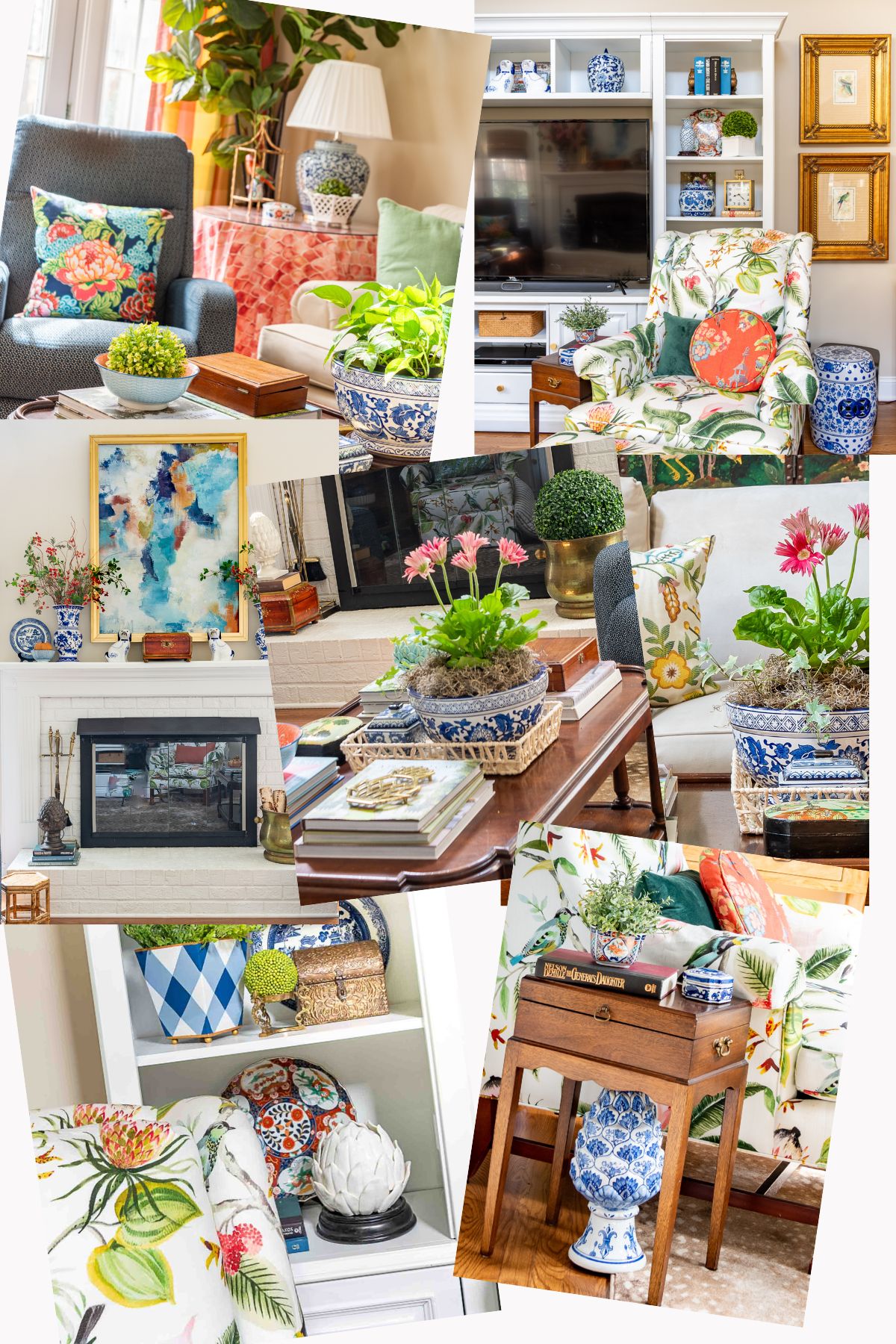
• Make a Wish List: Brainstorm ideas for every possible element you may want. Budget or time constraints may not allow for every single thing you’d like to incorporate into your space, but you need to a least have a list to be able to prioritize their importance.
• Measure the Space: Ensure you have accurate dimensions of the room, which are critical for planning and purchasing.
• Set a Budget: Determine how much you are willing to spend on the project. Don’t forget to include the cost of diy supplies, such as paint, paint brushes, tarps, etc. Count on actually spending about 20% more than what items cost to allow for unexpected expenses or problems along the way.
Keep up with expenditures as you go on a spreadsheet so that you don’t experience the dreaded “we spent how much?” syndrome.
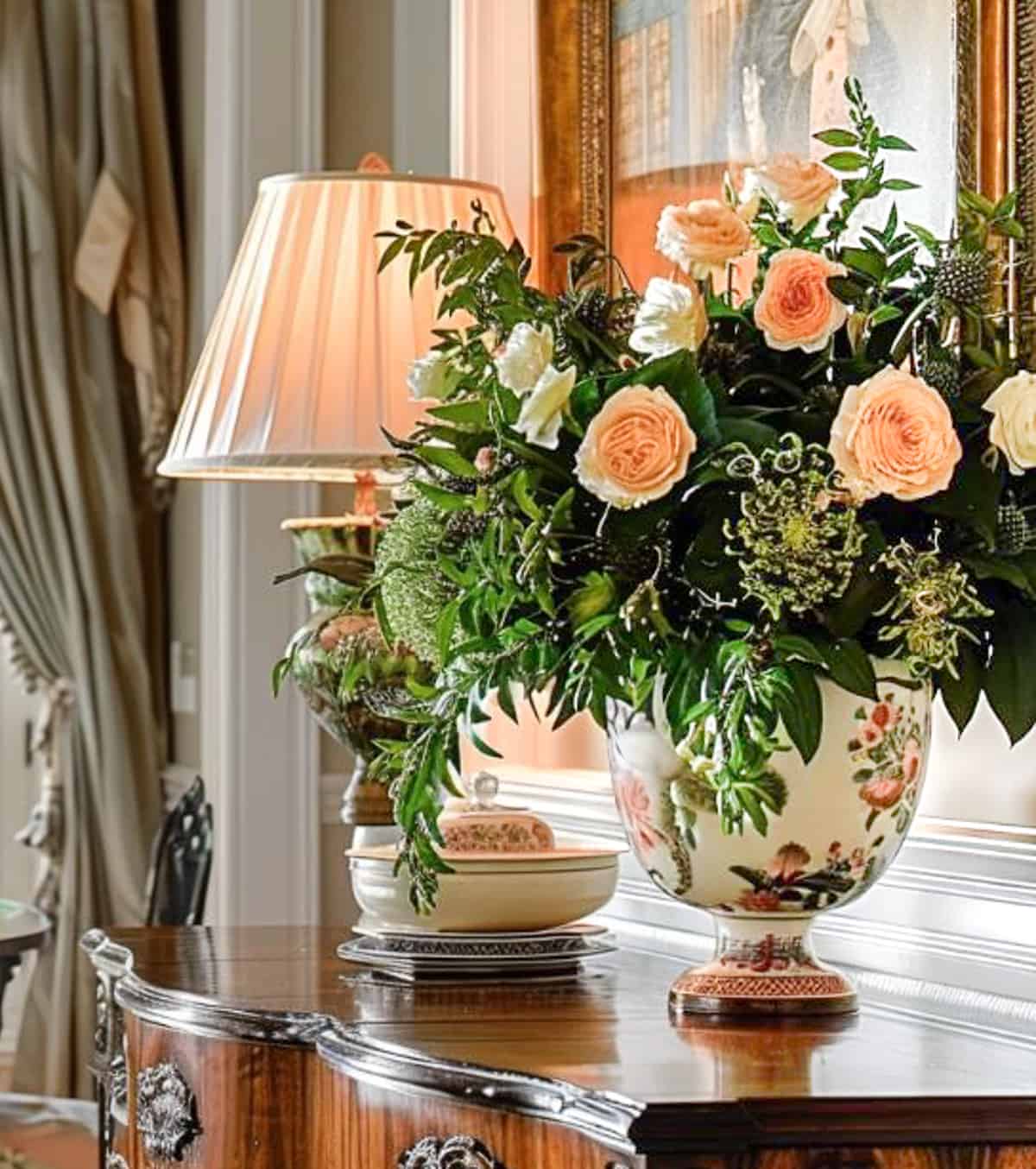
I’ve spent a lot of time looking at what you should do. Now let’s consider some of the common mistakes to avoid.
Mistakes to avoid
• Ignoring Functionality: Focusing too much on aesthetics without considering how the room will be used can result in a beautiful but impractical space.
• Overlooking a Lighting Plan: Failing to plan for various lighting needs can have a huge impact on the lack of enjoyment and mood of a room.
• Underestimating Costs: Not setting a realistic budget can lead to overspending or incomplete projects. Familiarize yourself with today’s prices.
• Rushing the Process: Trying to finish too quickly without proper planning can result in choices that I can almost guarantee you will regret later.
• Following Trends Blindly: While trends can provide inspiration, overly trendy designs can quickly become outdated.
Alright, my friend. I’ve given you the beginning – now it’s up to YOU to put it into practive!
By following the steps outlined here, you are well equipped to tackle your project. Now you can dive in with confidence, knowing that each choice you make brings you closer to the dream space you’ve envisioned.
Chapter 2 in the Simply Decorating series: A Quiz to Find Your Personal Home Decor Style
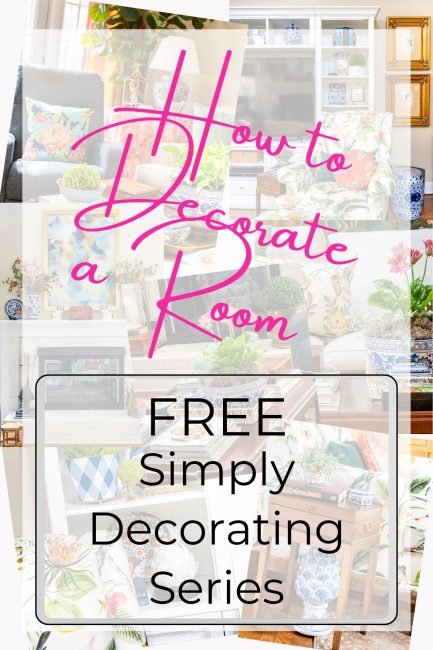
Very excited about this series! Would love to learn more about lighting and layering of lamps!
Great topic suggestions! Thank you!